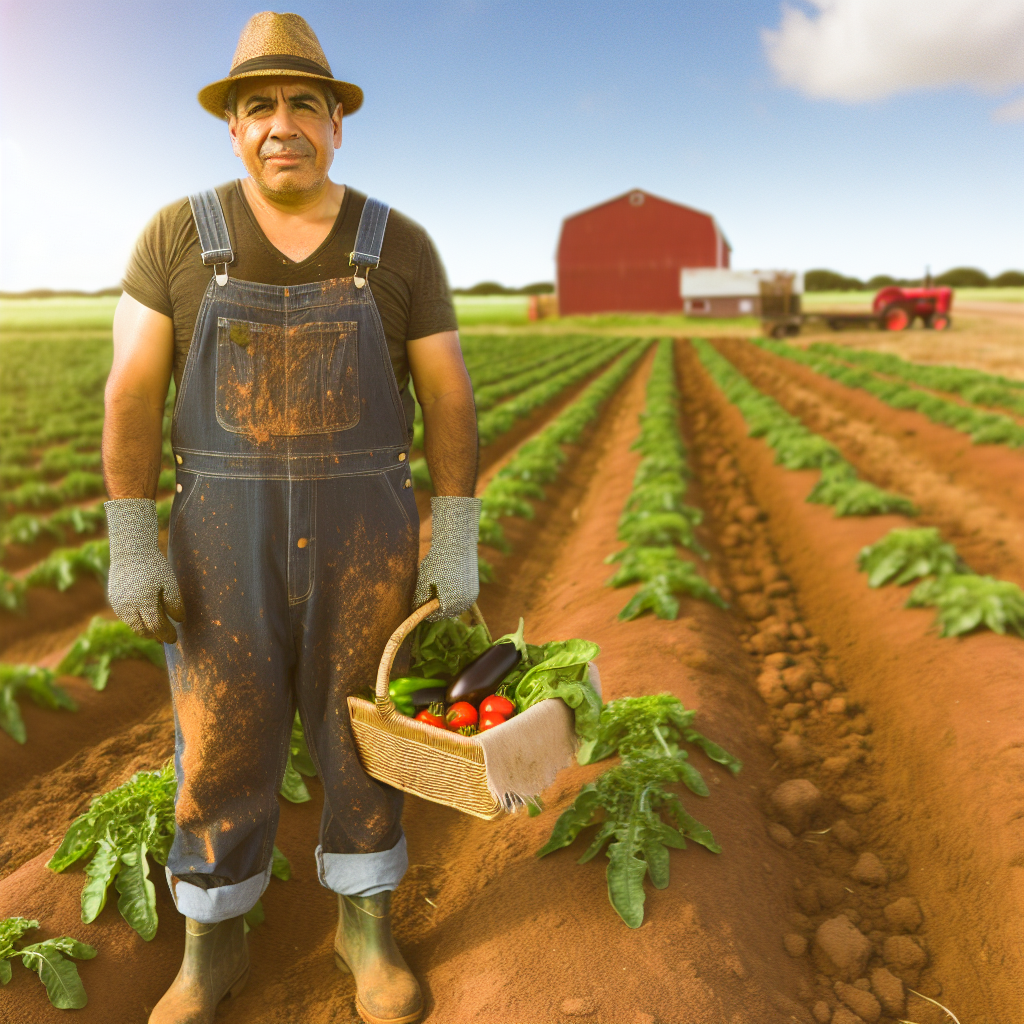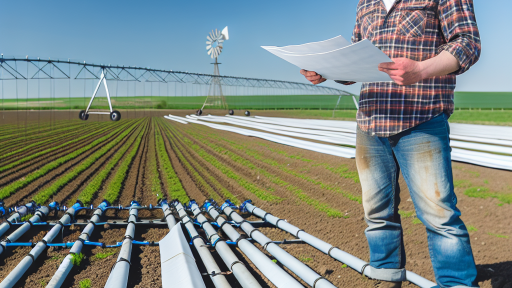Understanding the Importance of Local Food Sourcing for Small Farms
Strengthening Community Connections
Local food sourcing fosters strong relationships between farmers and consumers.
This connection builds trust and encourages community investment in farms.
Moreover, local sourcing supports local economies by keeping money in the community.
Enhancing Freshness and Quality
Food sourced locally is often fresher than products shipped long distances.
Fresh produce retains more nutrients and flavor, improving overall quality.
Additionally, consumers appreciate the taste of locally grown food.
Reducing Environmental Impact
Local sourcing significantly reduces transportation emissions.
This practice minimizes the carbon footprint associated with food production.
Furthermore, supporting small farms decreases the reliance on industrial agriculture.
Adaptability to Market Needs
Small farms can quickly adapt to local market demands.
They can experiment with diverse crops based on consumer preferences.
Also, this flexibility allows farmers to respond efficiently to market fluctuations.
Promoting Food Security
Local food sourcing contributes to regional food security.
When communities rely on local farms, they ensure a steady food supply.
This approach can also reduce vulnerability to global supply chain disruptions.
Transform Your Agribusiness
Unlock your farm's potential with expert advice tailored to your needs. Get actionable steps that drive real results.
Get StartedSupporting Sustainable Practices
Small farms often employ sustainable farming techniques.
These practices help preserve the environment and enhance soil health.
Supporting local food also encourages organic and regenerative farming methods.
Identifying Your Target Local Market
Understanding Your Consumers
Knowing your consumers is vital for small farms.
Identify their needs and preferences.
This knowledge helps in tailoring your products effectively.
Engage with local communities through surveys or farmers’ markets.
Ask for feedback to improve your offerings.
Consider hosting farm visits to educate consumers.
Targeting Restaurants
Local restaurants often seek fresh, seasonal ingredients.
Approach chefs directly to discuss their sourcing needs.
Build relationships with local culinary professionals.
Offer samples to showcase your quality produce.
Highlight unique selling points, like organic or heirloom varieties.
Connecting with Retailers
Retailers are crucial for increasing your farm’s visibility.
Research local grocery stores and specialty shops.
Make a list of potential partners that align with your values.
Present your products clearly and professionally.
Be prepared to discuss pricing and delivery options.
Building a Strong Network
Fostering relationships in your community is essential.
Join local agricultural associations or cooperatives.
Attend networking events to meet potential partners.
Participate in local food fairs to promote your farm.
Collaborate with other local producers for bulk sales.
Showcase Your Farming Business
Publish your professional farming services profile on our blog for a one-time fee of $200 and reach a dedicated audience of farmers and agribusiness owners.
Publish Your ProfileBuilding Relationships with Local Chefs and Food Business Owners
Importance of Collaboration
Building relationships with local chefs fosters collaboration.
These connections can lead to mutual benefits for both parties.
Chefs often seek fresh, local ingredients for their menus.
On the other hand, farmers gain direct access to a reliable market.
Strong partnerships can enhance the local food ecosystem.
Understanding Local Needs
Farmers should understand the specific needs of chefs.
This understanding helps in supplying relevant products.
Chefs often prioritize seasonality and flavor in their dishes.
Being adaptable to their preferences can create opportunities.
Regular communication keeps farmers informed about changing trends.
Networking Opportunities
Attending local food events creates networking opportunities.
Farmers can meet chefs and food business owners at these gatherings.
Participating in farmer’s markets builds visibility in the local area.
Social media platforms also serve as effective networking tools.
Sharing seasonal harvests and recipes can attract interest.
Offering Unique Products
Farmers should highlight unique or specialty products.
Chefs often look for distinctive flavors to distinguish their menus.
Small farms can cultivate heirloom varieties or rare ingredients.
By offering these, they can attract attention from local kitchens.
Creating Value-Added Products
Developing value-added products can strengthen relationships.
Examples include jams, pickles, or sauces made from farm produce.
These products can help chefs incorporate local flavors into dishes.
Value-added goods also enhance the farm’s profit margins.
Building Trust Over Time
Trust is essential in any successful business relationship.
Farmers should consistently deliver quality products to chefs.
Reliability strengthens the partnership between the two parties.
Feedback from chefs provides insights for continuous improvement.
Over time, trust leads to long-lasting collaborations.
Delve into the Subject: Sustainable Practices In Animal Farming
Utilizing Farmers’ Markets as a Sales Channel for Local Produce
Benefits of Farmers’ Markets
Farmers’ markets provide direct access to local customers.
They foster community connections through direct sales.
These markets enhance the visibility of small farms.
Additionally, they promote seasonal eating and local sourcing.
Building Relationships with Customers
Interactions at farmers’ markets create loyal customer bases.
Farmers can share stories behind their produce.
These stories resonate with consumers who value transparency.
Moreover, personal connections lead to repeat purchases.
Strategies for Success
Small farms should focus on branding and presentation.
A professional booth attracts more customers.
Displaying fresh produce appealingly enhances sales.
Showcase Your Farming Business
Publish your professional farming services profile on our blog for a one-time fee of $200 and reach a dedicated audience of farmers and agribusiness owners.
Publish Your ProfileFurthermore, offering samples can entice hesitant buyers.
Effective Marketing Techniques
Promoting participation in farmers’ markets via social media boosts awareness.
Farmers can utilize local newsletters and community boards for announcements.
Collaborating with other local vendors can broaden customer reach.
Participating in events or themed days can increase foot traffic.
Understanding Customer Preferences
Gathering customer feedback is essential for improvement.
Surveys can help identify popular products and preferences.
Additionally, farmers should adapt their offerings based on demand.
Observing shopping habits can aid in inventory management.
Leveraging Seasonal Trends
Farmers should take advantage of seasonal produce trends.
Aligning products with seasonal recipes can attract more customers.
Planning for holidays and local events increases sales opportunities.
Incorporating local traditions can enhance market presence.
Learn More: Leveraging Online Platforms for Direct Farm Sales
Leveraging Community Supported Agriculture (CSA) Programs
Understanding CSA Programs
Community Supported Agriculture (CSA) connects farmers with local consumers.
Members purchase shares of the harvest in advance.
This model fosters a strong bond between producers and consumers.
Moreover, it helps small farms maintain financial stability.
Benefits of CSA for Small Farms
Participating in CSA offers multiple benefits for small farms.
First, it provides upfront capital for operations.
This financial boost supports planting and maintenance costs.
Secondly, CSA strengthens community ties.
Members actively engage with the farm through events.
This interaction builds loyalty and appreciation for local food.
Strategies for Implementing a Successful CSA
To create a successful CSA, farms should focus on clear communication.
Regular updates keep members informed about crop progress.
Additionally, prompt feedback from customers fosters improvements.
Another strategy involves diverse offerings.
Including a variety of vegetables, fruits, and herbs attracts more members.
Also, consider adding optional extras like eggs or honey.
Marketing Your CSA
Effective marketing is crucial for CSA success.
Utilize social media platforms to reach potential customers.
Engage with posts about farming practices and seasonal offerings.
Participate in local farmer’s markets to increase visibility.
Word of mouth can also be a powerful tool for attracting members.
Continuing Engagement with Members
After establishing the CSA, ongoing member engagement is essential.
Host member-only events like farm tours and harvest festivals.
These activities enhance the community feel around the farm.
Furthermore, maintain a monthly newsletter to share recipes and tips.
This approach keeps members connected and excited about their shares.
Showcase Your Farming Business
Publish your professional farming services profile on our blog for a one-time fee of $200 and reach a dedicated audience of farmers and agribusiness owners.
Publish Your ProfileFind Out More: Implementing Organic Techniques In Modern Farming
Collaborating with Other Small Farms for Shared Resources and Distribution
Benefits of Collaboration
Collaboration among small farms leads to shared resources.
This approach reduces costs and increases efficiency.
Additionally, it allows farmers to pool labor for larger projects.
Moreover, farms can share expertise and best practices.
This exchange fosters a community spirit and support network.
Types of Collaboration
Small farms can collaborate in various ways.
One effective method is through joint marketing efforts.
Farmers can create a collective brand for their produce.
Another strategy involves sharing equipment to minimize expenses.
Cooperative purchasing groups can help secure bulk discounts.
Creating a Local Food Network
Establishing a local food network enhances distribution channels.
Farmers can work together to set up a shared delivery system.
This system ensures freshness and reduces transportation costs.
Additionally, farmers can join local farmers’ markets as a group.
Such collaboration increases visibility and customer base.
Best Practices for Effective Collaboration
Clear communication is essential for successful collaboration.
Farmers should hold regular meetings to discuss goals and needs.
Setting boundaries and responsibilities ensures accountability.
Furthermore, documenting agreements helps prevent misunderstandings.
Lastly, celebrating milestones fosters a sense of community.
Find Out More: Connecting Farmers with Local Consumers Effectively

Implementing Effective Marketing Strategies for Local Food Visibility
Identifying Target Customers
Understand your local community’s demographics and preferences.
Conduct surveys to gather insights on consumer habits and trends.
Utilize this data to identify your target audience effectively.
Creating Compelling Branding
Develop a unique brand story that resonates with your customers.
Use local imagery and language in your branding to foster connection.
Ensure your branding reflects sustainability and quality values.
Leveraging Social Media
Engage with your audience on platforms like Facebook and Instagram.
Share behind-the-scenes content to build a relationship with consumers.
Post regularly about events, promotions, and new products.
Utilize hashtags to boost visibility in local searches.
Participating in Local Events
Get involved in farmers markets, food festivals, and community events.
Offer samples to encourage trial and direct feedback from customers.
Network with other local businesses to increase visibility.
Implementing Email Marketing
Collect email addresses from your customer base for future communication.
Send newsletters containing updates, promotions, and recipes.
Personalize email content to make your customers feel valued.
Collaborating with Local Businesses
Partner with local restaurants and stores to feature your products.
Consider cooperating on marketing efforts to reach more customers.
Showcase Your Farming Business
Publish your professional farming services profile on our blog for a one-time fee of $200 and reach a dedicated audience of farmers and agribusiness owners.
Publish Your ProfileCross-promote on each other’s platforms for greater exposure.
Utilizing SEO Strategies
Optimize your website with relevant keywords related to local food.
Ensure your site is user-friendly and mobile-responsive.
Regularly update content to improve search engine rankings.
Engaging in Community Outreach
Host workshops or farm tours to connect directly with consumers.
Educate the community about the benefits of local sourcing.
Encourage feedback to improve your outreach efforts further.
Exploring Online Platforms and Social Media for Direct Sales
The Importance of Online Presence
In today’s digital age, a strong online presence is essential for small farms.
Online platforms provide farmers with direct access to consumers.
Additionally, they enable farms to showcase their products effectively.
Social media plays a vital role in reaching broader audiences.
Choosing the Right Online Platforms
Selecting the right platform can make a significant difference.
Farmers should consider options like Etsy, Facebook Marketplace, and Shopify.
These platforms offer tools to create online storefronts easily.
Furthermore, they provide opportunities for targeted marketing campaigns.
Utilizing Social Media Effectively
Farmers can leverage social media to engage with customers.
Platforms like Instagram and Facebook allow for visual storytelling.
Sharing behind-the-scenes content fosters community and trust.
Additionally, farmers should encourage customer interaction through comments.
Building a Local Brand Online
Establishing a recognizable brand helps small farms stand out.
Farmers should communicate their unique selling points clearly.
Using local imagery and themes can resonate with the community.
Moreover, storytelling about farming practices can enhance brand loyalty.
Strategies for Direct Sales
Offering promotions can drive sales through online platforms.
Farmers might consider seasonal discounts or bundle deals.
Creating limited-time offers can create urgency as well.
Additionally, reaching out to local influencers can boost visibility.
Measuring Success Online
Tracking online sales and social media engagement is crucial.
Farmers can use analytics tools to gauge effectiveness.
Data can help identify which products resonate with consumers.
Furthermore, it allows for adjusting marketing strategies as needed.
Evaluating Logistics and Transportation Solutions for Local Distribution
Understanding the Importance of Logistics
Logistics play a crucial role in local food distribution.
Efficient logistics help small farms reach more customers.
Understanding this process enhances profitability and sustainability.
Identifying Transportation Methods
Various transportation methods exist for local distribution.
- Delivery vans are commonly used for perishable goods.
- Bicycles can serve tight urban spaces effectively.
- Trucks offer larger capacity for bulk deliveries.
Selecting the right method depends on distance and type of product.
Assessing Local Distribution Networks
Connecting with local markets improves distribution efficiency.
Farmers’ markets serve as excellent venues for selling directly.
Collaborating with local restaurants enhances mutual benefits.
Establishing partnerships with food cooperatives creates broader access.
Showcase Your Farming Business
Publish your professional farming services profile on our blog for a one-time fee of $200 and reach a dedicated audience of farmers and agribusiness owners.
Publish Your ProfileConsidering Cost-Effectiveness
Cost is a significant factor when choosing logistics solutions.
Calculating expenses helps determine feasible options.
Farmers should factor in fuel, maintenance, and labor costs.
Opting for shared transportation reduces individual expenses.
Implementing Technology for Efficiency
Technology aids in optimizing logistics and transportation.
Using apps for route planning cuts down delivery time.
Inventory management systems help track product availability.
Investing in GPS systems enhances real-time tracking capabilities.
Monitoring and Improving Logistics Strategies
Continuous monitoring can lead to better logistics decisions.
Gathering feedback from customers improves service quality.
Analyzing delivery times and costs informs necessary adjustments.
Regularly reviewing these strategies promotes long-term success.




